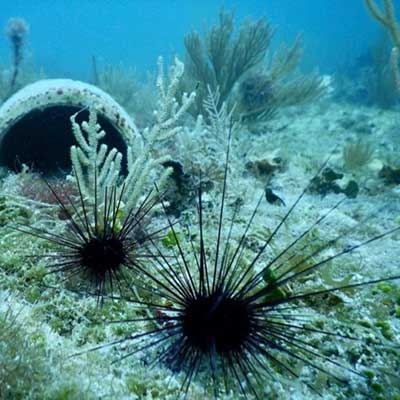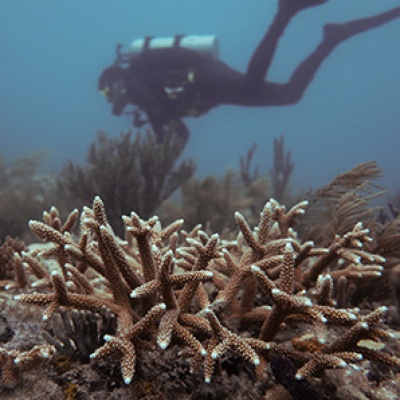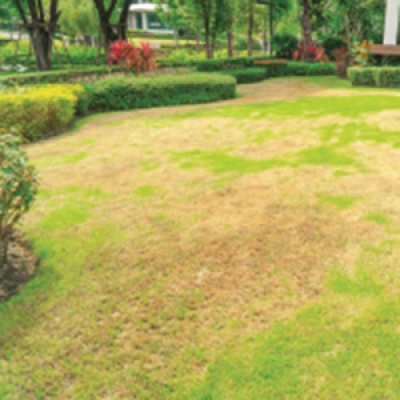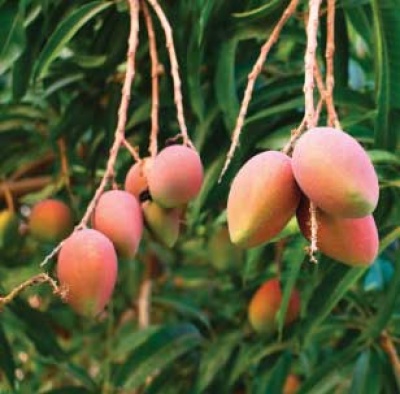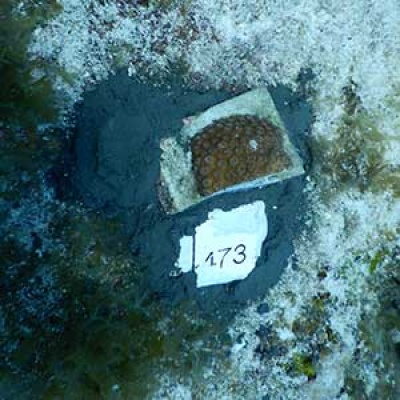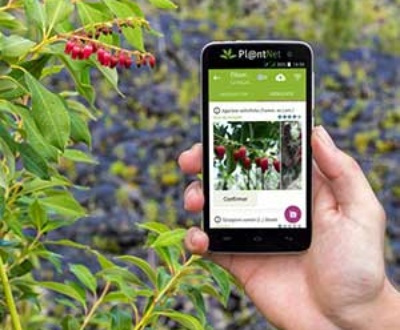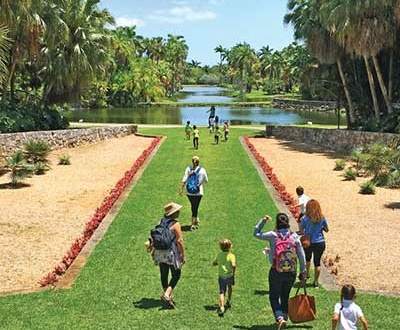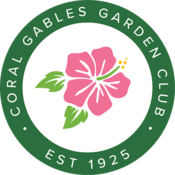Fertilizer is full of nutrients such as nitrogen and phosphorus. These nutrients are great for your plants, but when applied in excess, can contribute to nutrient pollution in our waterways. Nutrient pollution can cause algae blooms which are harmful to marine species and sometimes even people. This blog will discuss how you can curb nutrient pollution by practicing Florida-friendly fertilizing.
Biscayne Bay is the ecologic and aesthetic jewel of our community. It attracts tourists from around the globe because of its swimming and sightseeing value. Biscayne Bay is also a world class sailing bay and a sport fishing destination renowned the world over. The Bay drives our economy and is part of our cultural heritage. But, Biscayne Bay is suffering from excess nutrient-laden pollution – and, it’s approaching a tipping point.
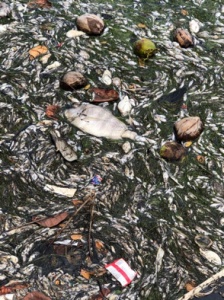 This became abundantly clear this summer in August when the Bay experienced a fish kill and algae bloom event – one of the most significant in recent memory. Available data point to the immediate cause of the fish kill being low dissolved oxygen. Dissolved oxygen is the amount of available oxygen in the water for all marine life – both plant and animals – to live. These low dissolved oxygen conditions were likely the result of nutrient pollution, which fuels the growth of algae and bacteria. The algae and bacteria can eat up the available dissolved oxygen in our waters, making the dissolved oxygen unavailable and quite literally suffocating marine life. Nutrient pollution, an accumulation of nutrients like nitrogen and phosphorus, is caused by polluting sources such sewage leaks, septic tank leachate, stormwater runoff and fertilizer overuse. Both chronic and acute pollution inputs were the likely driver of the fish kill.
This became abundantly clear this summer in August when the Bay experienced a fish kill and algae bloom event – one of the most significant in recent memory. Available data point to the immediate cause of the fish kill being low dissolved oxygen. Dissolved oxygen is the amount of available oxygen in the water for all marine life – both plant and animals – to live. These low dissolved oxygen conditions were likely the result of nutrient pollution, which fuels the growth of algae and bacteria. The algae and bacteria can eat up the available dissolved oxygen in our waters, making the dissolved oxygen unavailable and quite literally suffocating marine life. Nutrient pollution, an accumulation of nutrients like nitrogen and phosphorus, is caused by polluting sources such sewage leaks, septic tank leachate, stormwater runoff and fertilizer overuse. Both chronic and acute pollution inputs were the likely driver of the fish kill.
We’ve known for some time that nutrient pollution has been a problem for Biscayne Bay. In 2019, scientists from the National Oceanic and Atmospheric Administration released a study that reviewed 20 years of water data for Biscayne Bay. They found that the Bay is facing a regime change. This means, that the Bay is at risk of changing from a seagrass dominated ecosystem to an algae dominated one. We’ve already seen some initial changes in the Bay, including a loss of more than 20 square miles of seagrass. In some areas, 80-90% of seagrass has already disappeared. These trends can be difficult to reverse.
Since 2018, Miami Waterkeeper has been working with local municipalities to address just one of the nutrient pollutant inputs to Biscayne Bay: fertilizers. Miami Waterkeeper developed a model fertilizer ordinance targeted specifically at South Florida and paying special attention our unique climatic zone, geography, and substrate. The intent of this regulation is to address excess nutrients from fertilizers that may be reaching our waterways and Biscayne Bay.
The key components to this ordinance include:
• A summer-time rainy season black out period on fertilizer application from June – September
• A 15-foot mandatory set back from waterways and storm drains for fertilizer application
• A fertilizer mix standard requiring at least 50% slow release nitrogen and 0% phosphorus
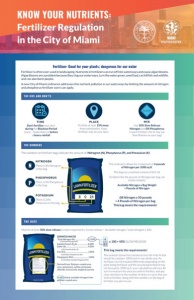 The first municipality in Miami-Dade County to pass this ordinance was North Bay Village, followed shortly thereafter by the Village of Key Biscayne and the City of Miami. In May 2020, the City of Miami adopted the “Gold Standard” of fertilizer ordinances in the state of Florida – setting the bar for municipal fertilizer regulation to protect water quality. Most recently, the City of West Miami passed a strong fertilizer ordinance. The City of Miami Beach as well as Miami-Dade County are also considering strong fertilizer ordinances on upcoming agendas. The City of Coral Gables is not far behind.
The first municipality in Miami-Dade County to pass this ordinance was North Bay Village, followed shortly thereafter by the Village of Key Biscayne and the City of Miami. In May 2020, the City of Miami adopted the “Gold Standard” of fertilizer ordinances in the state of Florida – setting the bar for municipal fertilizer regulation to protect water quality. Most recently, the City of West Miami passed a strong fertilizer ordinance. The City of Miami Beach as well as Miami-Dade County are also considering strong fertilizer ordinances on upcoming agendas. The City of Coral Gables is not far behind.
The Coral Gables Waterway runs through the heart of Coral Gables and is one of the waterways in Miami that we know is impacted by nutrient pollution. With support from the City of Coral Gables, Miami Waterkeeper is working with Florida International University and partners to further study the extent of nutrient pollution in the Waterway. In the meantime, the City of Coral Gables has passed a resolution to address fertilizer application on public property. Miami Waterkeeper has been working with Coral Gables leadership to broaden the scope of this policy and to implement an ordinance that would apply on both public and private property.
Here are some tips for Florida-friendly landscaping practices you can take at home!
• Don’t apply fertilizers during the rainy summer months
• Minimize or eliminate use of herbicides or pesticides
• Avoid overwatering your lawn
• When you do need to water, aim your sprinklers away from impervious surfaces like driveways or pavement and water early in the day
• Add mulch to gardens to reduce water evaporation and reduce the need for herbicides
• Sweep up vegetative debris – don’t wash it down the storm drain or toss it in a canal
• Leave your grass clippings on your lawn to naturally fertilize
• Plant native plants that are naturally adapted to our climate
In partnership with the Coral Gables Community Foundation, Miami Waterkeeper has developed educational materials for Coral Gables residents to educate the community about nutrient pollution and fertilizer. In fact, you can take this quiz to determine if you’re already using fertilizer responsibly!
Remember: a clean Bay begins in your backyard. We should all be aware of how our individual actions can impact water quality downstream. Learn more about Miami Waterkeeper’s work on fertilizer at www.miamiwaterkeeper.org/fertilizer.
Miami Waterkeeper is a Miami-based non-profit organization dedicated to defending and protecting South Florida’s watershed. Our mission is to provide swimmable, drinkable, fishable waters for all. Lean more at www.miamiwaterkeeper.org
About the Author

Kelly Cox, Esq. serves as General Counsel to Miami Waterkeeper where she oversees organizational operations and advocacy efforts. These efforts include legal and policy campaigns related to fertilizer, sewage leaks, septic tanks, sea-level rise, and more. Kelly is also a member of the Adjunct Faculty at the University of Miami RSMAS where she teaches Environmental Law and Policy to graduate students.
Fertilizer is full of nutrients such as nitrogen and phosphorus. These nutrients are great for your plants, but when applied in excess, can contribute to nutrient pollution in our waterways. Nutrient pollution can cause algae blooms which are harmful to marine species and sometimes even people. This blog will discuss how you can curb nutrient pollution by practicing Florida-friendly fertilizing.
Sign up here for email notifications about new Hothouse Blog articles!
More articles on the subject:
More from our blogs
See all postsRecent Posts
- April 2023 April 1, 2024
- Good News on Environmental Plastics February 1, 2024
- Material World / Plant World January 1, 2024
Leave a Comment cancel
This site uses Akismet to reduce spam. Learn how your comment data is processed.



